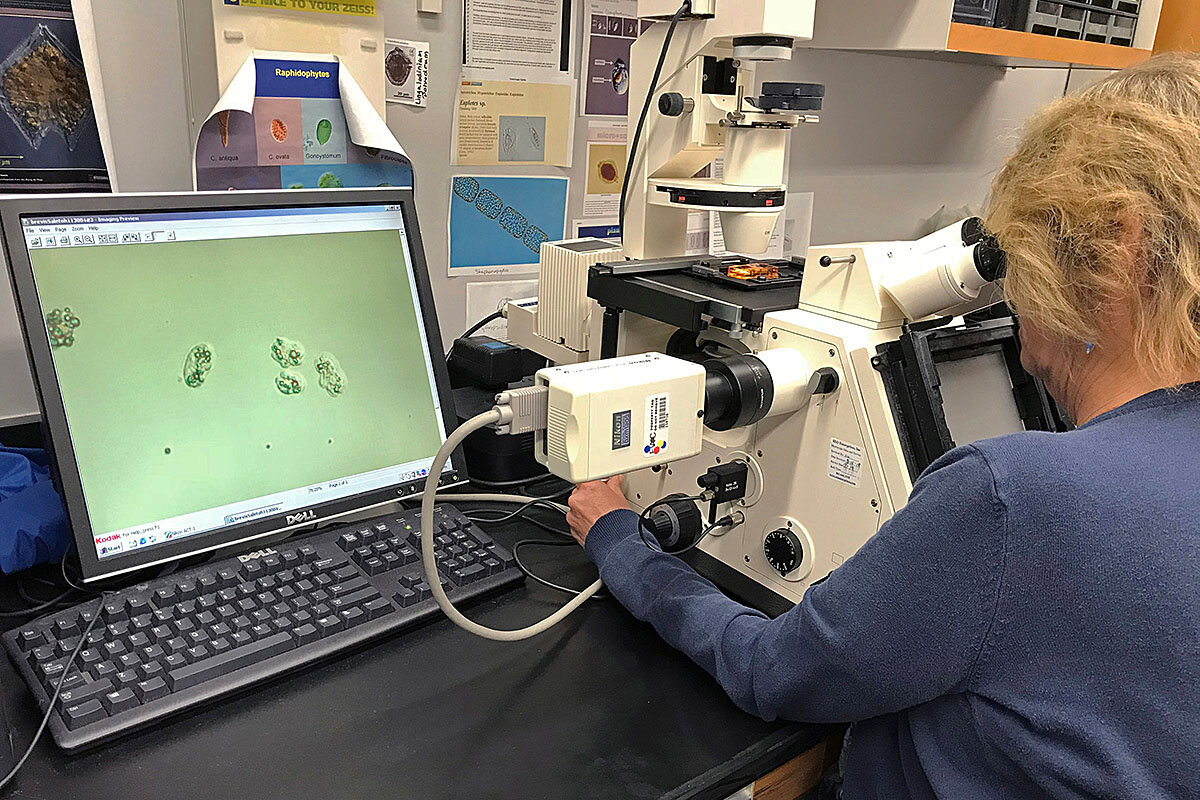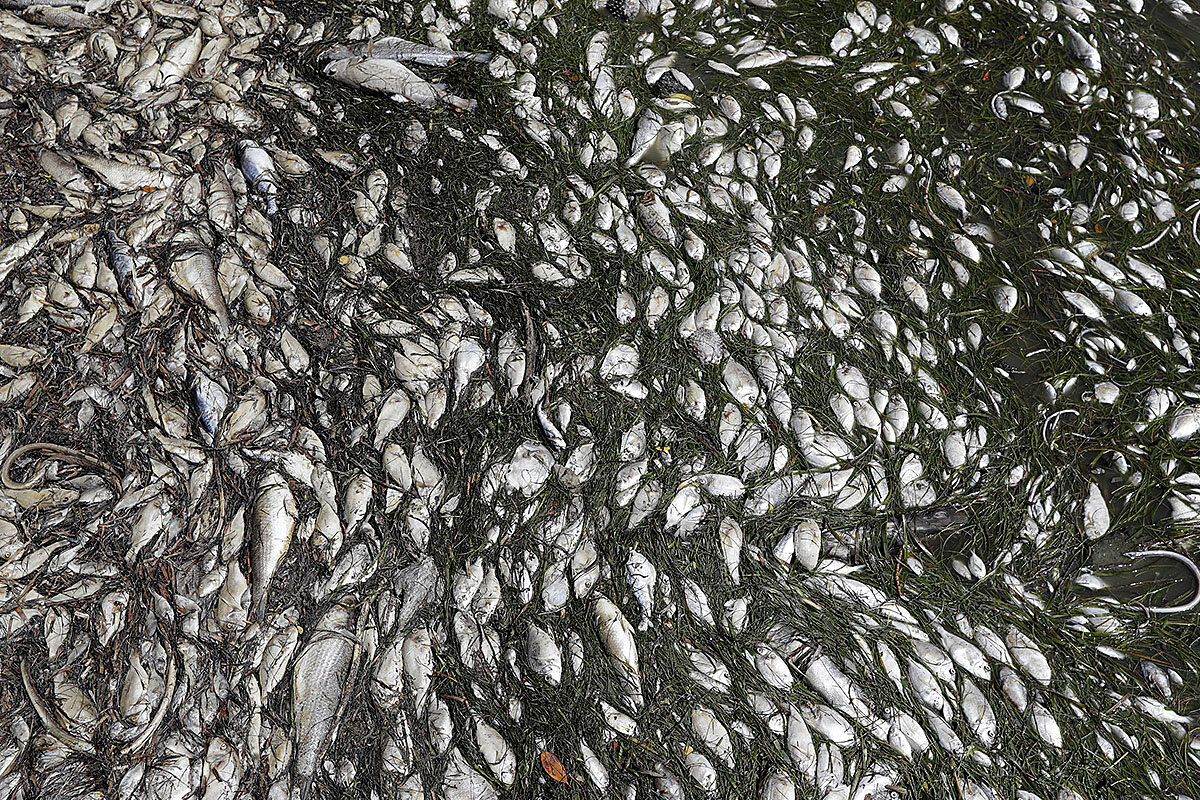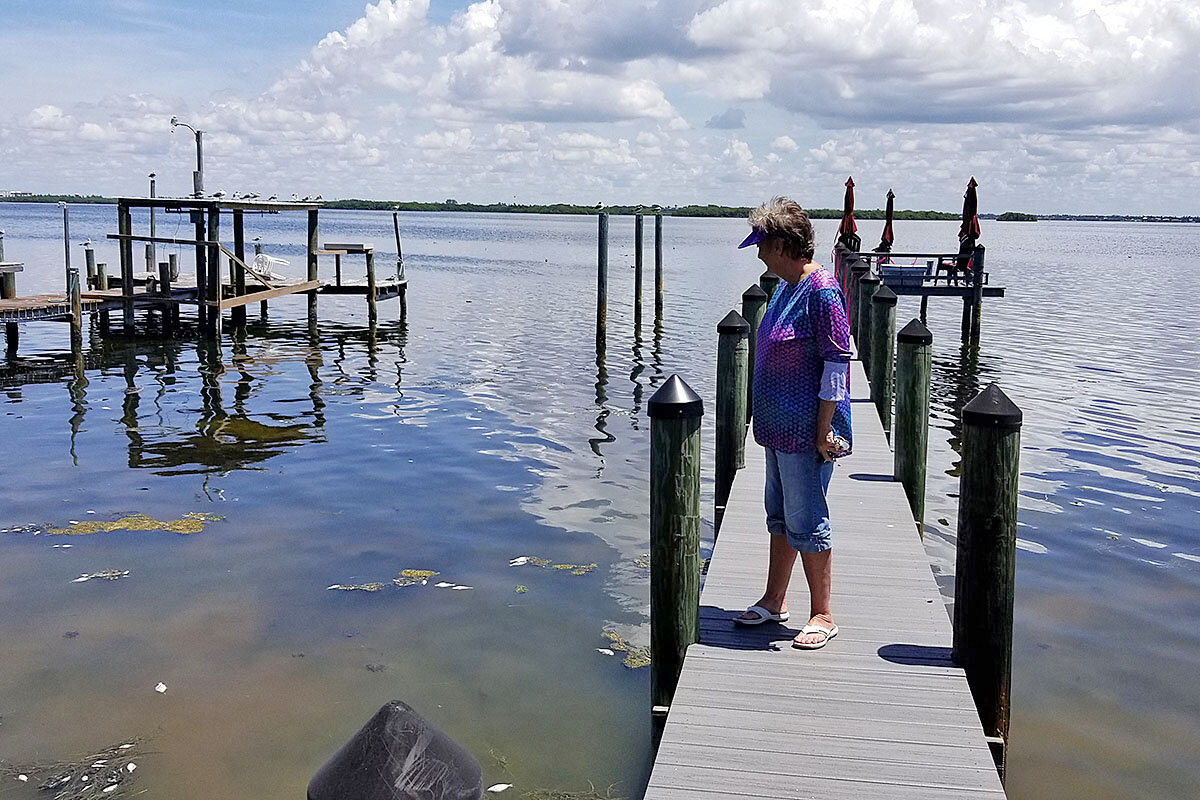From pier to the Capitol, red tide divides – and unites – Floridians
Loading...
| CORTEZ, Fla.
Nothing much seemed amiss in the historic fishing village of Cortez last week as fishermen offloaded an easy 1,000 pounds of crevalle jack – headed to Canada – while forklifts tipped fresh ice into massive coolers.
But for fisherman Kirt Aylward, the dockside commotion belied an existential concern for not just fishermen, but for much of the Florida coast: a noxious tide that he had steered his skiff through that morning.
A harmful algal bloom known as red tide is forcing Floridians, from the fishing pier to the State Capitol, to confront a universal foe. The scourge has added fresh fuel to political debates over environmental protection in the state. But it has also brought Florida together in defense of its most precious resource: the ocean.
Why We Wrote This
The environment and the economy are often pitted against each other in a zero-sum game. But, as Floridians dealing with an epic red tide are experiencing, environmental problems can exact an economic toll.
“In the past, fish have been able to outrun the tide,” says the sun-seared Mr. Aylward, who had to go far afield in his 20-foot skiff to bag a modest haul of glass minnows, a local bait fish. “Now it is so big and vast they just can’t get away from it.”
Red tide is a seasonal phenomenon caused by ocean-swirling algae that can creep to shore, typically fueled in some proportion by nitrogen-rich runoff, warm ocean surface temperatures, and heavy rainfall. The offending microorganism, Karenia brevis, produces a suite of neurotoxins and in 2011 was blamed for the deaths of nearly 500 dolphins, pelicans, and manatees in Indian River Lagoon on Florida’s Atlantic coast.
This year, the phenomenon seems “on steroids,” as one resident says. Here in Manatee County, more than 150 tons of dead fish, sharks, dolphins, and manatees have been dragged out of the once-azure waters, now turned rusty brown. After nine straight months, the bloom is draining millions from local economies.
Understanding the disaster and directing resources to thwart it has become a surging political issue in an election year.
“Policy issues are often far removed; red tide is not far removed,” says Aubrey Jewett, a political scientist at the University of Central Florida in Orlando. “Red tide burns your eyes, you can’t go to the beach, fish are all dead in huge numbers, it’s been here for weeks and months and may go on for weeks and months – holy smokes! Yes, it resonates.”
The gathering tide
As the tide gathers and bends around the coast, Tori, a server at a dockside restaurant in Cortez, has watched all the tourists run away, minus the ones bravely choking down plates of clams between wafts of rotting fish. That has left locals to quibble over drinks about the extent of the tide – and what to do.
“Florida is as divided as a Trump election” about red tide, says Tori, who declined to give her last name.
The slow-motion disaster comes as the state is already struggling with freshwater blue-green algae growth now clogging some of the state’s iconic springs. Those blooms have definitively been tied to phosphorous pollution from the state’s interior agriculture sector. As the red tide lingers, the economic toll is mounting.
“The situation is a real threat to the Floridian economy,” says Kevin Wagner, a political scientist at Florida Atlantic University, in Boca Raton.
Everything from fertilizer runoff from the sugar industry to red clouds of Saharan dust particles have been blamed. Septic tank seepage and even car exhaust are also possible culprits.
Although the exact cause is not yet known, “it is hard to imagine that [the current red tide explosion] is natural,” says William Mitsch, director of the Everglades Wetland Research Park at Florida Gulf Coast University in Naples. “Clearly, there is some relationship between nitrogen and these explosions. The question is: Where did that nitrogen come from?”
The topic has become part of a larger environmental debate in several political elections in the state this fall.
'A balancing act'
Republican Gov. Rick Scott, who running for US Senate against incumbent Democrat Sen. Bill Nelson, has come under fire for his emphasis on economic interests at the expense of environmental protections.
“Florida’s economy is heads and shoulders better than when Governor Scott came into office,” says Professor Jewett, in Orlando. “But environmental protection is a vulnerability: His opponent can hammer that home with images of green algae and red tide.”
Congressman Ron DeSantis, who just secured the Republican nomination for governor in Tuesday’s primary, has already made a name for himself in the state as an advocate for the environment against Big Sugar for its role in the spread of blue-green algae in freshwater areas.
Yet despite hard-charging TV ads, the finger-pointing has started to give way to collaboration. “We need all hands on deck to help,” Senator Nelson said in a press release announcing a bipartisan bill to beef up federal research on South Florida algal blooms.
Indeed, red tide has “actually unified the two parties more than anything,” says Professor Mitsch.
Ed Maro, an Anna Maria Island resident, says the local emergency management has done “an amazing job” cleaning up beaches. To him, the devastation is “God’s plan,” but nevertheless sets up a “balancing act” for state leaders.
Surveying the fish kill from her dock on Anna Maria Island, Lynn Selander, a retired teacher from Toledo, Ohio, takes a breath. “Such a beautiful breeze,” she says. “Too bad it is poisonous.”
Having never seen it so bad, she says it is a commentary on humanity’s impact on what is ultimately a “fragile ecosystem” that needs to be protected from polluters, no matter who they are. But she believes that releases from pollution-choked Lake Okeechobee have likely played a role, necessitating “more water treatment plants to keep that from happening.”
For many like Ms. Selander, the red tide disaster “is a chickens-come-home-to-roost situation,” says John Richard Stepp, a cultural anthropologist at the University of Florida in Gainesville. “Connecting the dots [between environmental policy and red tide] is not easy. But Floridians care deeply about water, which leads to awareness. And that gives me a lot of hope.”









